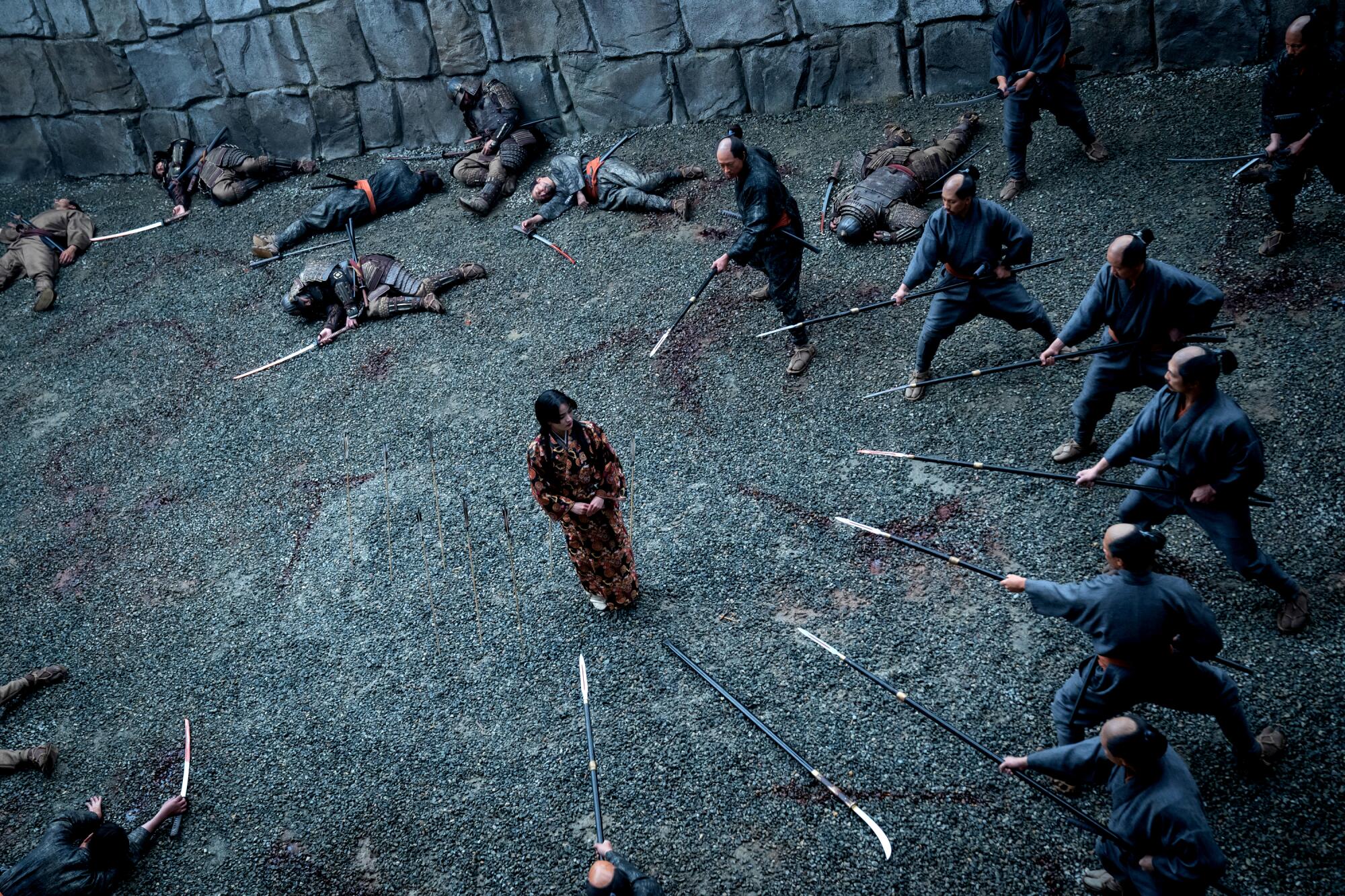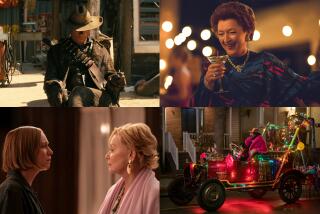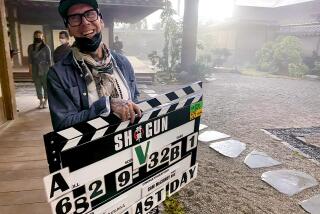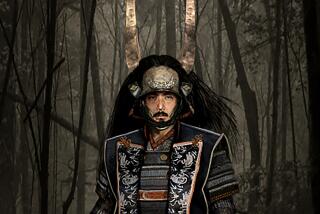
- Share via
“We made this Lady Mariko’s [Anna Sawai] episode,” says “Shōgun” cinematographer Sam McCurdy about the climactic chapter “Crimson Sky.” “She becomes very much the center of focus, where every scene she’s in, the perspective is always twisted in her direction.” The dramatic scene in which Mariko attempts to leave Osaka Castle with a group of advisors being held hostage inside sees her inching forward on the pebble road beneath her feet. Arrows land at her side, warning her to go no further, but she presses on, a sign of the character’s unrelenting strength. “When she’s trying to leave, we tried to place the camera at the center of the story,” he says. “So it provided us with information in how we could prep in terms of equipment, lensing and when we photographed things from a distance.” Shallow focus and wide anamorphic lenses reinforce Mariko as the subject while sweeping overhead shots provide scope and scale. “If she wasn’t in the frame, the camera always took her perspective so that everybody came toward us,” notes McCurdy. Mariko is eventually encircled by guards as she attempts to fight them off, only to finally collapse from exhaustion amid the fallen arrows — a visual motif of Mariko’s desire for death.
More to Read
From the Oscars to the Emmys.
Get the Envelope newsletter for exclusive awards season coverage, behind-the-scenes stories from the Envelope podcast and columnist Glenn Whipp’s must-read analysis.
You may occasionally receive promotional content from the Los Angeles Times.






